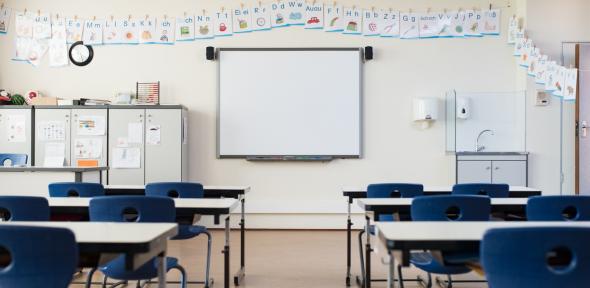Institute of Continuing Education (ICE)

Submitted by Carla Dobson-Pérez on Tue, 21/07/2020 - 15:07
Educational inequality is nothing new, explains Dr Nigel Kettley, ICE’s Academic Director for Education and Social Science, as he guides us through the past, present and future of class in the classroom.
The relationship between social class and equality in education has been the subject of research since the 1950s, and there are three major ways in which educational inequality manifests itself: inequality of opportunity, of resources and of outcomes, by which we mean things like GCSE and A-level results.
Throughout those 70 years of study, the persistent message is that class does impact pupils’ school outcomes. When it comes to addressing the root causes of that disparity, however, work often centres on trying to identify discrete facets of class that might be the ‘solvable’ source of all attainment inequality. For example, by investigating whether working-class children have lower aspirations than their middle-class peers, or whether the school environment or curriculum is somehow inherently biased. I’d argue that we should think more holistically about students’ social backgrounds. The trigger for educational inequality isn’t solely access to material resources, parental involvement or what happens within the classroom itself, but the sum of all experience – a child’s aggregate lifestyle.
Media commentators suggest that our present social regulations are likely to be exacerbating inequality, and they may be right. But trying to pin that down to single explanations, like not having access to technology or a good diet, only tells part of the story. We need to take account of a child’s neighbourhood, their friendship circle, their engagement with parents, their hopes and dreams and everything else that forms the basis of their day-to-day experience.
What’s interesting right now from an academic perspective is to see how students from different backgrounds fare with their upcoming GCSE and A-level results. Over the last couple of years, we’ve seen the gap between the grades attained by disadvantaged pupils and their peers widen. This year, we’ll see students admitted to universities based largely on teacher-predicted grades. Will the attainment gap between classes remain much as it is? Or will it shrink or grow? What’s going to be important is that once teachers make their grade predictions, exam boards will need to verify them as rigorously as possible.
Spooling into the future, as an observer, it will be fascinating to watch the Class of 2020 during their degree courses and beyond. Will they perform any worse than students admitted after traditional public examinations? These are the lives of real people we’re talking about so without taking that lightly, it could produce some interesting social scientific evidence if we find that pupils admitted to universities on predicted grades do just as well as those who are made to sit exams.
At this present time, we don’t really know whether the exam outcomes achieved by different social classes are a good indicator of subsequent performance as, understandably, there’s been very little experimentation to see if institutions can take comprehensively educated students with lower grades and teach them a higher education syllabus to the same level of outcome. This is particularly true in highly selective universities like Cambridge.
Historically, society has tried to tackle educational inequality in several different ways. For example, there have been initiatives aimed at making the curriculum more relevant to working-class kids or at raising their aspirations, new systems of comprehensive schooling, university outreach programmes and policies like the Pupil Premium designed to increase the resources directed at disadvantaged students. These strategies have tended to focus on changing the values or behaviours of working-class children rather than creating a concerted, structural effort to transform the circumstances people find themselves in.
Later, continuing education has an important role to play for those who, for whatever reason, didn’t take the traditional education route. These programmes provide valuable, additional opportunities to access higher education and to learn new skills, allowing more people to flourish in their careers and enhance their own personal development when they might otherwise have perceived that chance to have gone.
But the fact that we’re still talking about educational inequality today suggests that making teachers in schools take sole responsibility for resolving the issue can only change so much. To significantly improve opportunities, resources and outcomes for disadvantaged students over the long-term, we probably need to make a deeper, more systemic shift and work together to help create a more equal society for all.
To find out more about Education and Social Science programmes currently available at ICE visit: https://www.ice.cam.ac.uk/courses/search/subject/education/subject/socio...